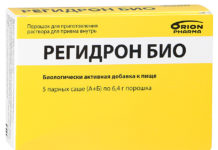A popular plant for the preparation of herbal medicines peppermint, has medicinal properties and contraindications. In what cases it is possible, and in which it is impossible to apply this sprout, it is worth knowing to absolutely everyone who is fond of traditional medicine and herbs.
Material Content:
Chemical composition and calorie content
Peppermint consists mainly of carbohydrates. There are almost 4 times less proteins in this plant, and almost no fats. Mint also contains 8 g of dietary fiber found in cellulose cell walls. Most of the water in the plant is almost 80 g, and least of all fats (3.75 g) and ash (1.76 g). Due to the high percentage of carbohydrates, mint has a calorie content of 70 Kcal.
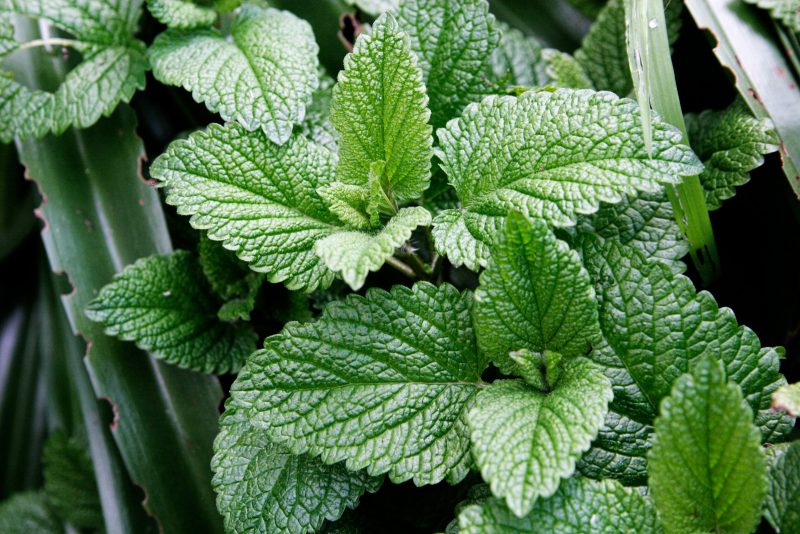
The plant is very rich in vitamins. If you arrange them in descending order of quantity, you get the following list:
- PP - 1, 706 mg with a daily norm of 20 mg;
- C - 31.8 mg with a need of 90 mg;
- B5 (pantothenic acid) - 0.338 mg with a norm of 5 mg;
- B2 (riboflavin) - 0.266 mg with a daily requirement of 1.8 mg;
- B6 (pyridoxine) - 0.129 mg, when 2 mg is required per day;
- B1 (thiamine) - at a rate of 1.5 mg per day;
- A - 212 mcg with a daily requirement of 900 mcg;
- B9 - 114 mcg at the desired level of 400 mcg per day.
It is impossible to completely fill the need for vitamins per day with mint. But the amount of nutrients in this plant is large, which explains its healing properties. Mint also contains omega-3 and -6 acids, which help maintain optimal cholesterol levels in the blood, as well as ensure proper heart function.
In addition to the listed beneficial components, peppermint contains phytosterols and minerals.
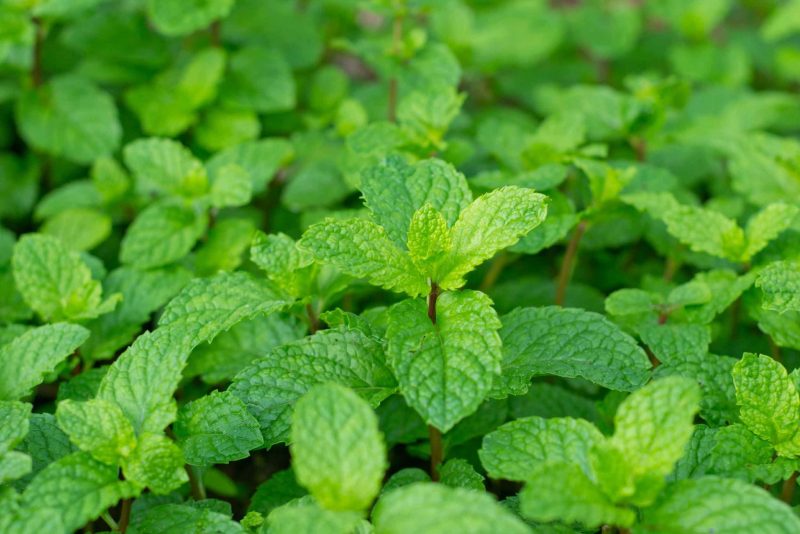
Among macro- and microelements you can find:
- potassium;
- magnesium;
- calcium;
- phosphorus;
- sodium;
- iron;
- copper;
- manganese;
- zinc.
Peppermint is an extremely healthy product that helps make up for the deficiency of both vitamins and minerals.But you need to use this plant carefully because of the presence of contraindications.
Peppermint: healing and beneficial properties
The beneficial properties of peppermint are very diverse, and their manifestation depends on the method of use and the type of existing problem. When using plants and medicines based on it inside, its composition is important.
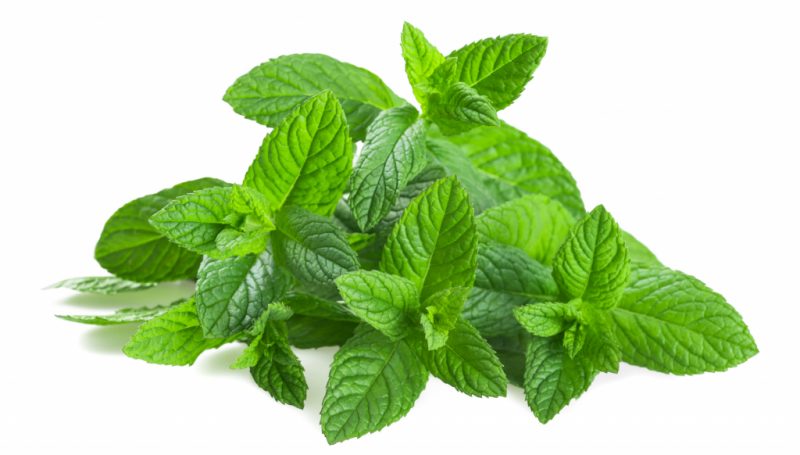
- So, vitamin A, which is found in mint, helps maintain good skin condition and vigilant vision.
- Vitamin B2 is responsible for the integrity of the mucous membranes and the ability to see objects in the dark.
- Menthol in the composition of mint has a refreshing effect. It is used in toothpastes and mouthwashes. It also helps a lot from nausea if you make candy based on it. Due to its irritating effect, menthol can cause a rush of blood to the skin. This effect is used in special lipsticks, which act as a safe way to temporarily enlarge the lips.
- Mint tea has a calming effect. Taking it at dinner improves sleep, which helps you feel more alert after waking up. Substances in peppermint relieve anxiety and inhibit the central nervous system. Therefore, peppermint infusions are often given to children before bedtime.
What is the difference between peppermint and ordinary?
Peppermint is known to many pharmacists. It has a strong smell and pronounced healing properties. Peppermint is a genus of plants that is united by a similar appearance and composition.
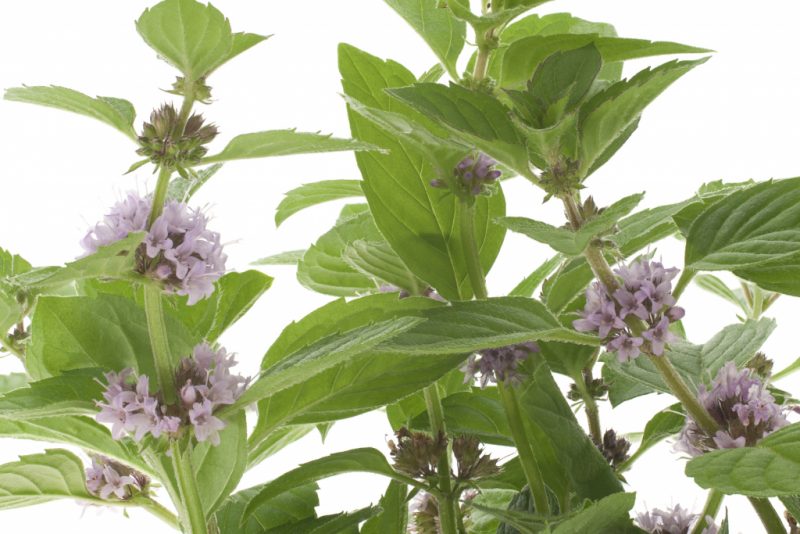
It includes:
- pepper;
- lemon;
- fragrant;
- garden;
- meadow;
- spiky;
- field;
- water;
- marsh;
- Japanese
- Korean
- apple
- feline;
- curly (curly);
- menthol;
- canine;
- long leafed;
- Chocolate
- ginger.
Common mint is often called fragrant. It has the brightest smell and is an independent species. And peppermint is a hybrid of garden and water. It is distinguished from others by a dense thick stem.
All peppermints vary in properties, but peppermint has a greater healing effect.
Application in traditional medicine
Due to its rich composition, peppermint has gained great popularity among herbalists and healers. She has been treated since ancient times, but these recipes have not lost their relevance. Mint is used in completely different forms, depending on which the plant exhibits certain properties.
Peppermint Tea
Peppermint tea has a mild sedative effect. It calms the nervous system, relieves stress, helps a person to relax. Daily use of such tea will give confidence and peace, which will help to better solve business issues and easier to communicate with people.

The drink should be consumed fresh so that the beneficial properties do not disappear, and the effect is most powerful.
To prepare it, just add a sprig of fresh or dried mint to the teapot.
Infusion and decoction

Peppermint infusion helps as a sleeping pill. It is popular for young children who, due to overexcitation, cannot calm down for a long time in the evening. A warm, pleasant drink adjusts to sleep and facilitates the transition from activity to relaxation. To do this, pour boiling water a sprig of peppermint and give the baby from 20 to 250 ml, depending on age. The use of the infusion does not hurt the parents, who find it difficult to fall asleep after a hard day's work.
Essential oil
Peppermint oil is widely used as a sedative. To do this, they drop it into a special pendant and wear it around the neck.

- A great way to improve sleep is to apply oil on a cotton pad and put it at the head of the bed or under the pillow.
- Also, this tool helps to get rid of headaches. It is applied to the skin in the temple area by mixing 1 drop with 1 tablespoon of false apricot or grape seed oil.
- If you increase the concentration of squeezed peppermint, we get a cure for the common cold. To relieve the symptoms of the disease and alleviate the condition, the mixture is applied to the neck, as well as to the feet.
- In the field of dentistry, peppermint oil is used for inflammatory diseases of the oral cavity. It is applied to the gums and distributed in massage movements. Particular attention is paid to areas of greatest pain.
Alcohol tincture of peppermint
For the preparation of tinctures from mint, 100 g of fresh or dried plant is suitable. It must be placed in a vessel and add 75% alcohol. Duration of preparation is 14 days. Store the bottle in a dark, cool place. Sometimes instead of alcohol they take vodka or well-purified moonshine.
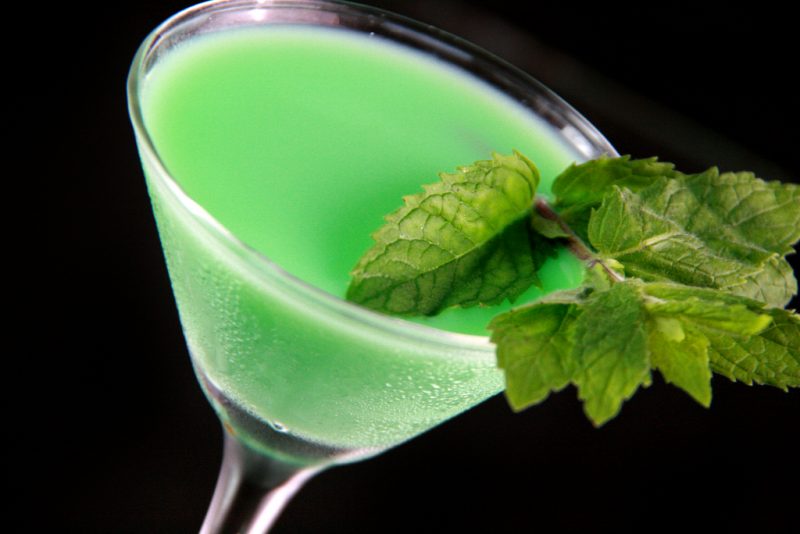
Tincture should be taken orally 25 drops three times a day. Helps with pain associated with diseases of the digestive tract. If you treat the face with tincture, the number of rashes will noticeably decrease. During colds, the product can rub the patient’s chest and back - this will help to ease sputum discharge and improve nasal breathing.
Fields of application
Due to the large number of active substances in the composition of the plant, peppermint is widely used in various fields. It is used not only to treat diseases and alleviate pathological conditions, but also for many other purposes.
In cooking
Peppermint leaves are added to tea to improve the taste and give it a new shade. In dried and crushed form, this plant is used as a spice for the preparation of sauces and meat.
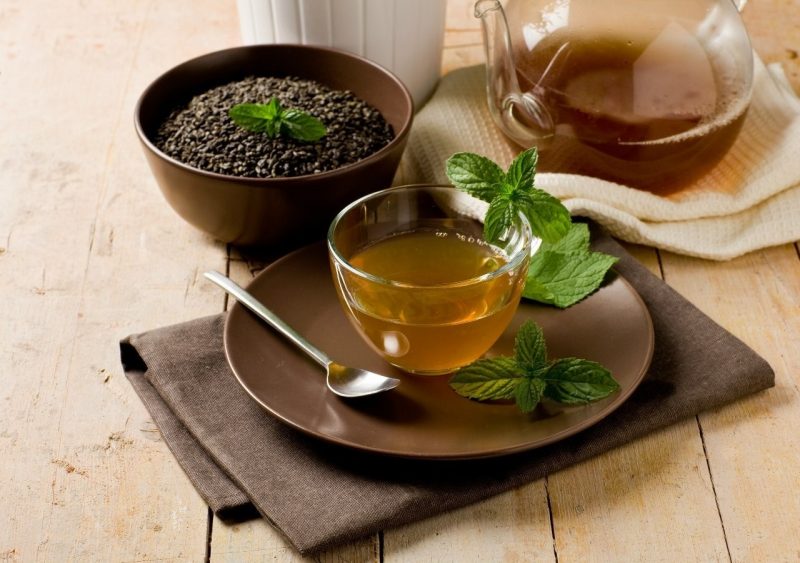
Also, mint often serves desserts with chocolate. It favorably sets off the taste of cocoa beans, adding new notes to it. For the same reason, many factories produce dark chocolate with the addition of mint. It is considered an elite dessert due to its unusual rich taste.
In cosmetology
Peppermint has antibacterial and anti-inflammatory properties. Therefore, it is widely used to treat acne.
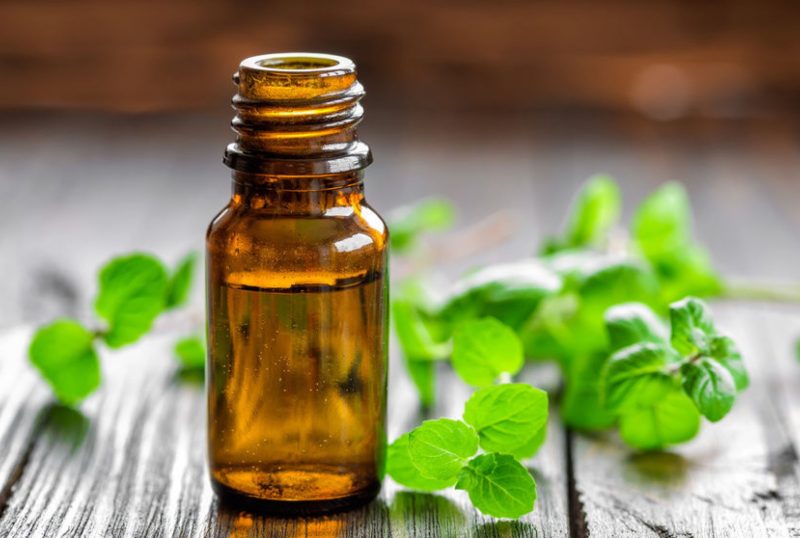
- Peppermint essential oil is applied pointwise to inflammation before bedtime. In the morning, the pimple dries noticeably, and by the evening it disappears without a trace.
- To care for problem skin, an alcohol tincture of mint is suitable, which must be applied to the entire face as a tonic.
- Peppermint broth perfectly moisturizes and tones the skin. It is used as a compress on the forehead. This helps smooth wrinkles and restore a healthy complexion.
- It is also useful to rinse your hair after washing with a mint broth. This will give them obedience, and also help to maintain cleanliness for a longer period.
Peppermint during pregnancy and breastfeeding
During pregnancy, many gynecologists recommend drinking peppermint tea. This helps relieve nervous tension in a woman and also calms the baby. It is especially useful to drink such tea at night.

This will help mom sleep better and regain strength, as well as calm the baby at night.
During breastfeeding, it is better to refuse a mint broth. Due to the bright taste, mother's milk may change, and the child will refuse to drink it or will be very capricious. Mint makes it bitter that newborns do not like it.
A highly concentrated broth is used to gently complete breastfeeding. Substances in the composition of mint act on the mother's body, reducing the amount of milk excreted. For the same reason, it is not recommended to drink a decoction until the decision on excommunication is made.
Contraindications and possible harm
Due to the active substances in mint, it causes vasodilation. This helps lower blood pressure.
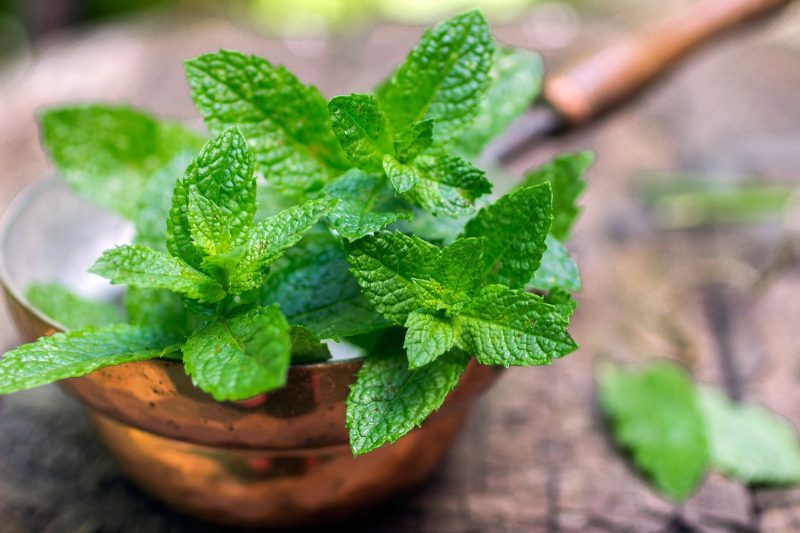
- People with hypotension and frequent fainting are not recommended to use peppermint-based products inside.
- Also, such drugs are not suitable for patients with varicose veins.
- With special care, it is worth giving decoctions based on mint to children. For their preparation, it is worth using special pharmacy teas or making the drink non-concentrated.
- External application of peppermint essential oil can cause allergic reactions and burns, so you need to monitor the condition of the skin and quickly remove the applied product if redness occurs.
Peppermint is a popular herb with a strong effect. When using drugs based on it, it is better to consult a doctor and conduct an allergic test on a small area of the body. This will help to avoid undesirable consequences and make treatment as effective as possible.







